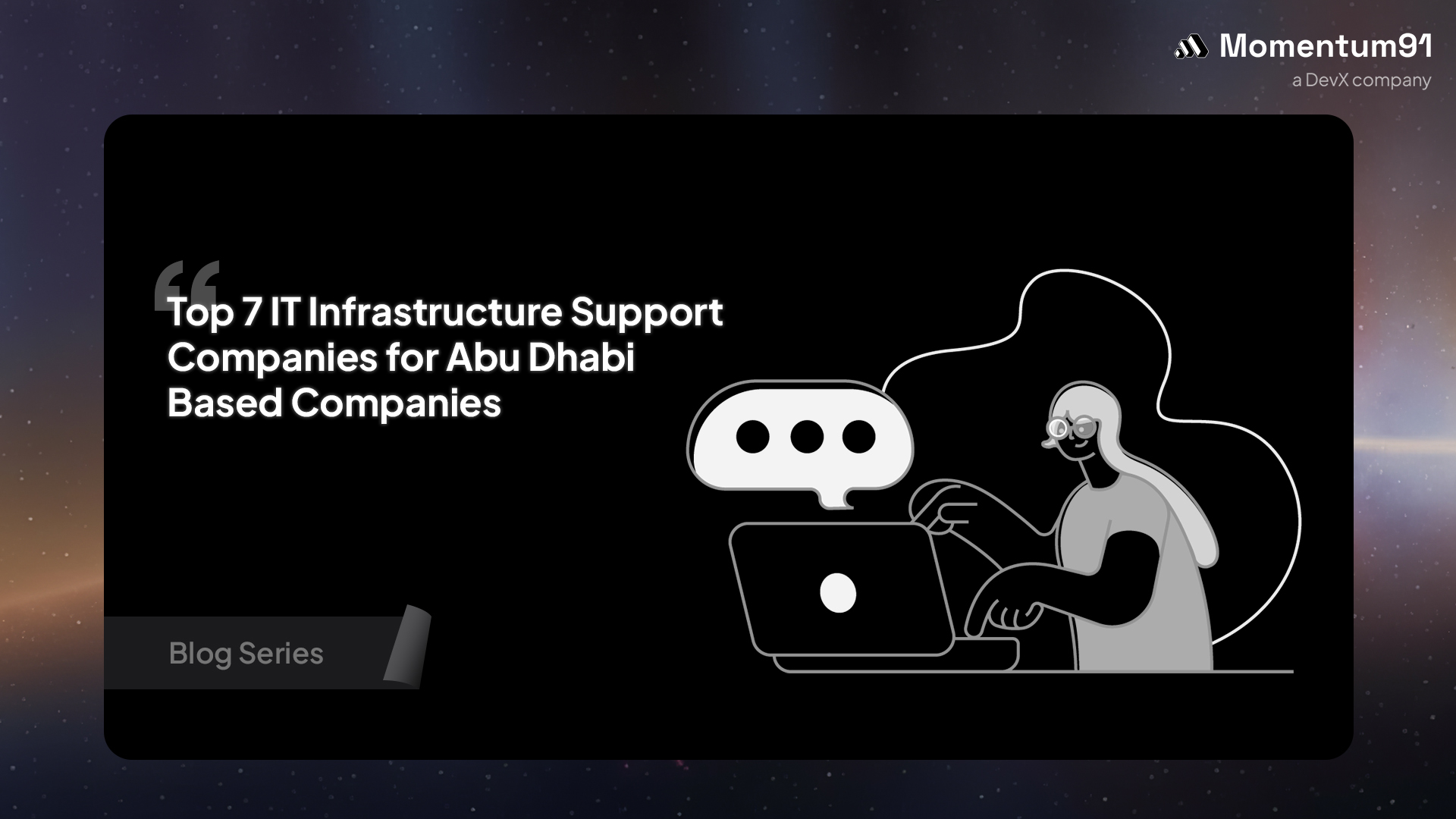Staff Augmentation Vs Managed Services: Is There Really A Difference?

Both staff augmentation and managed services solve the same problem of getting the right people or results when your internal team can’t handle everything.
But they work differently.
Staff augmentation adds specialists to your team, letting you manage projects directly and pay only for the time they work. Managed services, on the other hand, hand over full responsibility to a provider who delivers specific results under an agreement.
Knowing how these two models differ helps you choose what fits your project, budget, and control needs best.
The Core Philosophy: Input vs. Outcome
Choosing between staff augmentation vs managed services depends on how much control you want over your operations. Staff augmentation focuses on adding skilled professionals to your existing team, while managed services hand full responsibility to a provider who delivers specific results.
A) Staff Augmentation: You Own the Process
Staff augmentation runs on an input-based model. You pay for the time and expertise specialists bring, managing their work directly within your structure. It’s ideal for projects needing quick scaling or specialized talent.
With rising IT staff augmentation trends 2025, companies use this model for flexibility, faster delivery, and cost efficiency without long-term contracts.
B) Managed Services: Provider Owns the Outcome
Managed services follow an outcome-based model defined by clear Service Level Agreements (SLAs). The provider handles delivery, performance, and tools, ensuring stability and accountability. Many prefer managed services vs staff augmentation for continuous IT management, compliance, or cybersecurity.
Both models solve different business needs, and your choice depends on whether you want direct control or measurable outcomes.
Flexibility and Scalability: When Adaptation Matters
Scalability defines how your outsourcing model supports business growth. Both staff augmentation and managed services scale differently depending on your project goals and duration.
A) Staff Augmentation: Quick and Adaptive
%20Staff%20Augmentation_%20Quick%20and%20Adaptive.avif)
Staff augmentation offers high flexibility when you need fast scaling. You can expand or reduce your team within weeks without full-time hiring. For example, a fintech firm used staff augmentation to bring in five blockchain developers for a short-term launch, cutting project delays and costs by 30%.
This model fits project-based work, pilots, or seasonal needs. With growing IT staff augmentation trends 2025, many companies prefer this model for its agility and access to global talent.
B) Managed Services: Planned and Predictable
%20Managed%20Services_%20Planned%20and%20Predictable.avif)
Managed services provide structured scalability under defined Service Level Agreements (SLAs). When an e-commerce brand expects heavy traffic, the provider scales infrastructure and support in advance. Though slower, this model ensures system uptime, compliance, and stable managed services outcomes. It fits businesses with steady, long-term operational demands.
Both outsourcing business models work, but staff augmentation vs managed services choices depend on whether your focus is rapid expansion or consistent performance. Now, let’s look at how their cost structures shape your investment
Cost Structure: Understanding Your Financial Obligation
When comparing staff augmentation vs managed services, cost is often the deciding factor. Both models have distinct pricing structures that influence how businesses plan budgets, handle resources, and measure returns.
A) Staff Augmentation: Pay for What You Use
With staff augmentation, you pay only for the time and effort professionals contribute to your project. It follows a time and materials model, which means no fixed contracts or hidden fees. This makes staff augmentation flexible and cost-effective for short-term goals.
Example: A fintech startup needed AI engineers for three months to build a credit-risk model. Through staff augmentation, they hired specialists for only the required duration and reduced costs by nearly 35%.
Best suited for:
- Projects with changing requirements
- Businesses needing quick scalability
- Teams preferring direct control over costs
B) Managed Services: Fixed Retainer and Predictable Billing
Managed services use a fixed monthly or annual pricing structure under clear Service Level Agreements (SLAs). You pay for defined results instead of hours worked, which adds predictability to your budget.
Example: A healthcare firm outsourced IT maintenance through managed services and paid a fixed retainer covering 24/7 support, security updates, and infrastructure monitoring.
Best suited for:
- Long-term engagements
- Consistent workload and outcome needs
- Companies focusing on service delivery results
In short, staff augmentation vs managed services depends on flexibility versus predictability. The next section explains how control and accountability differ in each model and why that matters for your operations.
Control and Accountability: Managing Your Destiny
How much control you keep determines how accountable you stay for outcomes. This difference separates staff augmentation from managed services in real-world execution.
A) Staff Augmentation: You Lead the Way
With staff augmentation, you retain complete control over people and processes. The team follows your direction, reporting structure, and performance metrics. For instance, a tech startup expanding its AI module hired augmented developers who worked directly with internal leads, ensuring the project stayed aligned with business goals. You manage quality, but accountability remains with your team.
B) Managed Services: Provider Takes Ownership
In managed services, accountability shifts to the provider. Defined Service Level Agreements (SLAs) outline targets such as uptime, response time, or support quality.
A healthcare company, for example, outsourced its data management to a managed services provider responsible for 24/7 system uptime. The provider handled monitoring and fixes, ensuring consistent performance.
Onboarding, Skills, and Expertise Access
%20Onboarding%2C%20Skills%2C%20and%20Expertise%20Access.avif)
Getting the right talent at the right time is a key factor in choosing between staff augmentation vs managed services. Both models offer access to top professionals, but the way they onboard and deliver expertise is different.
A) Staff Augmentation: Quick Skill Injection
In staff augmentation, companies gain rapid access to specialized talent without long recruitment cycles.
- Pre-vetted experts join within days, reducing downtime.
- Onboarding is faster since they follow your internal systems and workflows.
- Best suited for short-term or project-based needs in AI, cloud, or cybersecurity.
- You choose who joins the team, ensuring control and alignment with your goals.
This flexibility and speed make staff augmentation a cost-effective way to handle skill gaps or peak workloads.
B) Managed Services: Long-Term Knowledge Building
With managed services, expertise develops through continuous engagement and system familiarity.
- Providers invest time to understand your infrastructure, goals, and compliance needs.
- The team gains deep institutional knowledge, improving service delivery outcomes.
- Ideal for ongoing needs like IT support, infrastructure monitoring, or application management.
- Continuous collaboration strengthens security and process consistency.
In comparing managed services vs staff augmentation, the first focuses on long-term stability, while the second delivers immediate scalability and access to niche skills.
Project Duration and Engagement Timeline
The duration of your project often determines which model works better: staff augmentation or managed services. Each suits a specific timeframe and engagement style.
A) Staff Augmentation: Best for Short to Mid-Term Projects
Staff augmentation is ideal for projects that last a few weeks to around two years.
- Works well for product launches, proof-of-concept builds, or temporary skill gaps.
- Lets you manage changing requirements without being locked into long contracts.
- Helps you scale teams up or down as needed without financial strain.
B) Managed Services: Designed for Long-Term Partnerships
Managed services fit long-term goals where consistency matters more than flexibility.
- Commonly used for multi-year IT support, infrastructure management, or cybersecurity operations.
- Providers invest in setup, optimization, and continuous improvement.
- Creates reliable, predictable outcomes and reduces operational overhead.
In short, staff augmentation works best for short-term agility, while managed services deliver long-term continuity and strategic alignment. Next, we’ll review how both models address security and compliance.
Security, Risk, and Compliance Considerations
Security management changes completely depending on whether you choose staff augmentation vs managed services. With staff augmentation, your organization keeps full control over data access, policies, and compliance. External professionals follow your protocols, sign NDAs, and use internal tools under your supervision.
You oversee background checks, permissions, and risk mitigation directly. In managed services, the provider takes on most of that responsibility. They manage data protection, threat detection, and compliance with laws like GDPR or HIPAA.
This approach reduces internal workload but relies on strong vendor accountability. Clear Service Level Agreements (SLAs), defined access levels, and compliance clauses protect your organization while maintaining transparency between both models of staff aug vs managed services.
How Momentum91 Can Help You with Staff Augmentation and Managed Services
Momentum91 combines deep AI, development, and design expertise to help you scale staff augmentation and managed services efficiently. With over eight years of experience, a global infrastructure across 25 centers and 11 cities, and a network of 13,000+ skilled professionals, we deliver embedded, full-stack teams that operate as an extension of yours.
We work fast, with 95% of staff augmentation and managed services teams going live in under ten weeks. From proof-of-concept to product rollouts and UX strategy, Momentum91 covers every stage of delivery with precision and speed.
Key Strengths:
- AI-Driven Execution: Smarter process automation and innovation built into every project.
- End-to-End Development: From idea to deployment, every phase of staff augmentation and managed services handled seamlessly.
- Full-Stack Expertise: Engineers, designers, and strategists embedded directly into your business vision.
- Integrated Offshore Teams: Dedicated teams that operate as if they’re onsite.
- Scalable Talent Pool: Rapid team expansion through one of India’s most trusted partner networks.
Momentum91 turns staff augmentation and managed services strategies into measurable outcomes that help your business grow faster and more efficiently.
Conclusion
Many companies face confusion when comparing staff augmentation vs managed services. Choosing the wrong model can drain budgets, delay delivery, and weaken team performance. When staff augmentation isn’t managed well, projects slow down, internal teams lose focus, and productivity drops.
On the other hand, relying completely on managed services without proper oversight can reduce control and transparency. These mistakes create inefficiency, missed targets, and rising costs issues no business can afford.
Momentum91 brings clarity to the staff aug vs managed services debate with a balanced, outcome-driven approach. We align flexibility from staff augmentation with accountability from managed services, giving your business the best of both.
Connect to Momentum91 today to build high-performing teams that turn your outsourcing strategy into measurable business growth.
FAQs
1. Can we use both staff augmentation and managed services together?
Yes, you can combine staff augmentation for flexible, short-term talent needs with managed services for ongoing operations. This hybrid outsourcing model allows rapid scaling, predictable results, and balanced control—helping businesses manage dynamic workloads, reduce costs, and maintain consistent service quality under structured Service Level Agreements (SLAs).
2. What’s the cost difference between staff augmentation and managed services?
Staff augmentation operates on hourly or project-based pricing, typically between $40–$150 per hour, offering cost-effective flexibility. Managed services charge fixed retainers, ranging from $1,000–$10,000 monthly, covering full operations. Short-term projects benefit from staff aug, while long-term IT and support functions perform better under managed services contracts.
3. How fast can we scale teams with staff augmentation?
With staff augmentation, pre-vetted professionals can onboard within one to four weeks. Providers access global talent pools, allowing faster scaling than traditional hiring. Businesses leverage this agility for projects needing specialized skills or quick execution—making staff aug vs managed services the faster model for short-term or evolving project needs.
4. What risks come with staff augmentation?
Common risks in staff augmentation include data access issues, limited oversight, or integration challenges. However, with strict NDAs, secure onboarding, and clear communication, these risks remain low. Compared to managed services, where providers handle full accountability, augmentation demands more internal governance to maintain security and performance consistency.
5. Do managed services provide better security?
Yes. Managed services providers implement continuous threat monitoring, data encryption, and compliance frameworks like GDPR or HIPAA. Under formal SLAs, they take responsibility for uptime, data protection, and incident response—offering stronger, round-the-clock security coverage compared to traditional staff augmentation setups managed internally.
6. How can we make sure managed services align with our goals?
To align managed services with business goals, set measurable KPIs, define response timelines, and hold regular performance reviews. Include accountability clauses in your Service Level Agreements (SLAs) and maintain transparent communication. This ensures outcomes match strategic objectives better than the reactive nature of staff augmentation models.
The inbox update you’ll never want to skip
A quick catch-up with ideas, wins, and tips worth stealing, straight to your inbox every week.
The easiest way to reach us.
Share your details and we’ll get back within 24 hours.
Blogs
A plethora of insights,all in one place
From strategy to execution. All the big ideas, practical guides & fresh perspectives that’ll help you scale with confidence
Ebooks
Comprehensive guides that break down the shifts in business and technology, Helping you lead with clarity.

Office Hours
Your direct line to our experts. Practical advice for scaling, right when you need it.

Reports
Data-backed perspectives on where industries are headed, giving you the foresight to make bolder moves.

Newsletter
A quick catch-up with ideas, wins, and tips worth stealing, straight to your inbox every week.
.avif)
Podcasts
Conversations where you get to know everything from the ones who know it best.
.avif)
Your Offshore Development Center, Done Right
Access top-tier global talent, enterprise infrastructure, and complete regulatory compliance through our proven model.
Start Now








